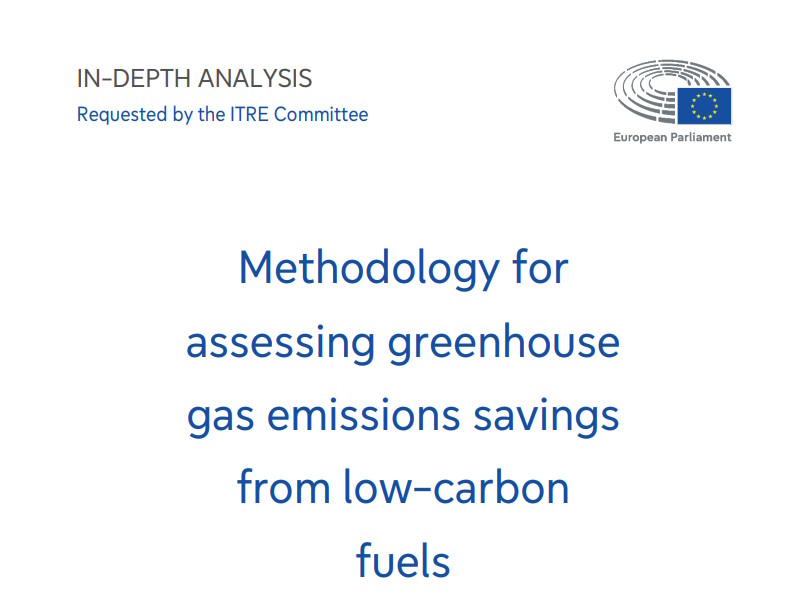Methodology for assessing greenhouse gas emissions savings from low-carbon fuels

This report, prepared at the request of the European Parliament’s Committee on Industry, Research
and Energy (ITRE) reviews the draft Delegated Act (DA) on low-carbon fuels and addresses following questions:
🔹 Which production pathways are included?
- The DA applies a technology-neutral, life-cycle approach.
- Fuels must achieve at least a 70% reduction vs. the fossil comparator (94 gCO₂eq/MJ).
- Both fossil pathways with CCS and electrolytic production routes for hydrogen production are eligible.
- Nuclear-based electricity is also recognised.
- Hydrogen leakage will be included once scientific consensus exists on its warming impact.
🔹 Does the DA enable the hydrogen economy?
- The Delegated Act (DA) is a regulatory enabler, not a market driver.
- The DA creates regulatory certainty via harmonised EU-wide accounting and certification, reducing investment risk and avoiding fragmented national rules.
- The DA is not a demand-side driver, no targets or incentives are included.
🔹 Does the DA address fossil fuel emissions?
- The DA incorporates methane CH₄ and CO₂ defaults but they are not strongly conservative.
- LNG-specific values are missing, risking underestimation. Its effectiveness will hinge on strict enforcement and robust methane reporting.
🔹 Price & cost expectations
- Blue H₂: 3.5–6.5 €/kg (costs depend on gas prices, CCS costs, and volatility).
- Electrolytic H₂: 6–8 €/kg today; costs could fall <3 €/kg with cheaper electrolysers + low-carbon electricity.
➡️ Overall: The DA is an important regulatory enabler. It sets the rules for certification and trade but does not itself stimulate hydrogen demand.
➡️ Source: Report: Methodology for assessing greenhouse gas emissions savings from low-carbon fuels
